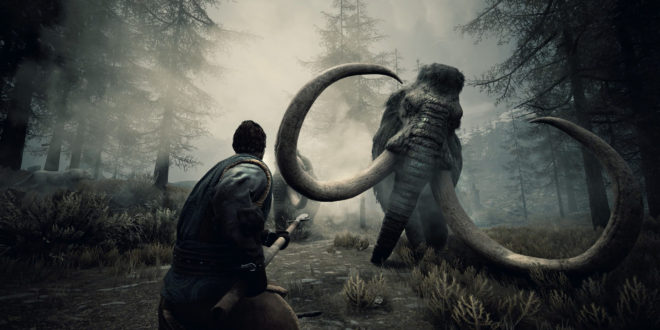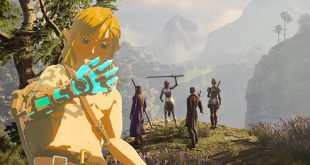Graphics middleware company Graphine recently announced its Granite SDK 5.0. The latest release is targeted at improving iteration times for artists, among a range of versioning and asset distribution improvements. And it will be exhibiting at GDC to show off the new capabilities.
We caught up with marketing manager Clement Galiay ahead of the show, to discuss working closely with developers and the impact of VR and 4K.
You’re best known for your texture-steaming technology what’s new in that area – both from yourself and for the area as a whole?
We just released a major update of our texture streaming middleware Granite SDK 5. Granite is based on a technique call virtual texturing which is still the most advanced approach to streaming. This technique used to require building very large texture atlas files during production but we got rid of this for once and for all in our latest release. In the end, Granite is an optimization tool and you want it to speed up your production and automatically maximize texture quality – so this is what we deliver.
Texture detail is very important in VR – are you disappointed by the speed of consumer take-up in this area?
VR indeed screams for texture detail so we focussed on this very early. We expected that the consumer adoption could be slow. We’d love to see more VR of course but we’ll get there and there’s plenty to do until then.
You support both Unreal and Unity, but do your users tend to one platform over the other and which is growing faster for you?
Both our Unreal and Unity plugins are growing and we see all kinds of different projects using both engines. Many larger console productions that reach out to us seem to be using Unreal. We’ve been focussing on Unity for our mobile VR (Daydream) and Augmented Reality projects. We recently collaborated with Weta Digital on bringing VFX quality assets to mobile AR, for example.
How closely do you work with developers that are really pushing the boundaries of what’s possible with your tech? How much do you learn from them?
We work really closely with our clients. Sometimes that even means working directly on their game. Therefore we know where to spend time improving Granite and we advise our client on how to get the most benefits out of Granite SDK. We love developers that push the boundaries because that challenges us to continuously look for ways to improve performance and increase artistic freedom.
We learn a lot about how their team works and how the artists create content so we can make sure Granite improves iteration time and handles well during production. We like to think that when working with a partner, we become an extended, remote part of their team. We try hard to understand requirements of their project and try to come to them with solutions, just like any other team member would do.
Can you detail a recent developer collaboration for us?
We recently developed a new workflow to allow Funcom to use Granite SDK in Conan Exiles. The project was already far in development when they looked into using Granite: they were going to ship a few months later and wanted a solution to automatically optimize textures. They mainly wanted to reduce the video memory needed to run the game with their high quality assets. But at this stage of the project they needed an efficient solution to avoid wasting the team’s time.
We were then experimenting with baking down the Unreal material graph into one large Granite streamed texture. This way, you can actually use the material graph as a texture creating tool and don’t worry about the runtime impact. So we decided to create a similar node for Funcom that would allow them to convert all their materials to Granite by placing only a few dozen nodes in their root materials. This way, there is absolutely no impact on the artist’s workflow or iteration time.
We helped Funcom set up a specific workflow with regular “bakes” (a remnant of the bake node, it should actually be called “importing”) on a dedicated machine. The generated Granite streaming files (Tile Sets) were then distributed internally when needed. They’ve written a blogpost about this on their dev diary.
In terms of console gaming, has the shift to 4K over the last year been a boon for you?
It certainly is an important trend. Rendering at 4K requires you to have 4x more texture data because you want to have the detail to fill those screen pixels. Upscaling all your textures is difficult because you quickly run out of memory. Granite SDK is a great solution to upscale everything and still use less video memory in your game.
For a long time, artists have been told by their tech team to be reasonable with the assets they create – but we’re here to tell them: “don’t worry anymore, just unleash your creativity and we’ll deal with it!”.

 MCV/DEVELOP News, events, research and jobs from the games industry
MCV/DEVELOP News, events, research and jobs from the games industry




